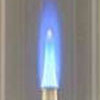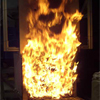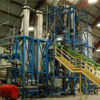Research Interests
Our research encompasses significant efforts in mathematical theory, numerical analysis and computation, laboratory experimentation and natural observation. On the applications side, our group addresses important societal problems such as the efficient use and production of energy, the design and propulsion of airborne and waterborne vehicles, water quality and reclamation technology, aspects of materials processing, including self-propagating high-temperature synthesis, as well as practical uses of catalysis. The group emphasizes fundamental research in its disciplines, application of basic knowledge to address the needs of society and education of students through their involvement in the research and its applications. The value of research grants currently in effect exceeds one million dollars annually, with funding from the National Aeronautics and Space Administration (NASA), various branches of the Department of Defense (DOD), the Department of Energy (DOE) and the National Science Foundation (NSF). In order to conduct this research, we process extensive experimental facilities including a high-pressure counterflow burner, ambient pressure counterflow burners, co-flow diffusion flame burners, a fire research chamber, a biomass gasification pilot plant and facilities aboard the International Space Station.
Research Areas
Energy Research
Important studies have included energy conservation for home and industrial use, evaluations of advanced fossil-fuel technologies such as coal gasification and liquefaction, oil recovery from heavy oil sources, tar sands and oil shale; developments of advanced fuel cells, and investigations of geothermal and renewable energy sources.Recent investigations have dealt with model developments and environmental-impact assessments for municipal-waste incinerators, studies on diagnostics of pollutant outputs, aspects of the designs of passively safe nuclear reactors, such as degradation of graphite by reactions with low concentrations of water or air, and prospects for the utilization of fuel-cell technologies.
Combustion Research
Current fundamental studies in combustion involve theory and experimentation on structures of hydrocarbon-air premixed flames and diffusion flames, including experimental measurements, supercomputer computations with full chemical-kinetic mechanisms and development of asymptotic methods for reduced chemical kinetics.Applications relate to aerospace-plane propulsion, to efficient power production by fossil fuels and to minimization of pollutant emissions from combustion chambers. The research is addressing problems of combustion in Diesel engines, in gas turbines and in rocket propulsion, including emissions of oxides of nitrogen from flames, combustion instabilities in liquid-propellant rocket motors and efficient and clean combustion of fuels sprays.
Research Facilities
Our combustion research facilities include three gas-chromatographic systems for measurements of concentrations of stable chemical species, a laser-Doppler velocimeter for velocity measurements in reacting flows, an argonion laser system for measurement of particle sizes and number densities by Mie scattering and a phase-Doppler particle analyzer for measurements of fuel sprays. Laser spectroscopic capabilities include Rayleigh, Raman and fluorescence spectroscopy using pulsed lasers with advanced detection systems for both one-dimensional and two-dimensional imaging. In addition, there is a laminar coflow diffusion-flame apparatus and a number of counterflow combustion systems for measurement of diffusion-flame, premixed-flame, fuel-spray and catalytic-combustion processes. Computer systems for computation of flame structures with full chemistry and for extraction of histories of droplet and flame diameters from video or photographic records are available. Droplet-trajectory and droplet-combustion facilities with photographic recording are in place, and a turbulent-jet flame apparatus is under construction, as is a solid-propellant combustion facility and a high-pressure combustion chamber.






